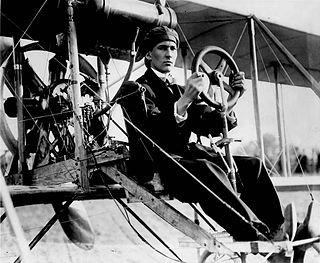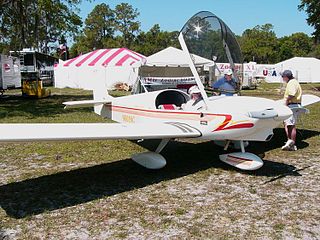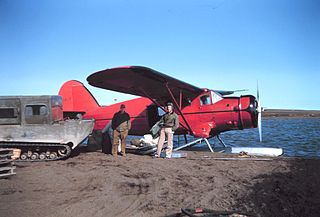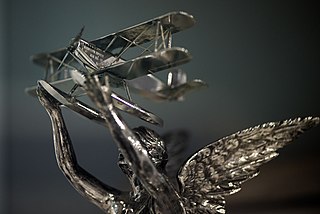 W
WThe Abbotsford International Airshow is held annually on the second Friday, Saturday and Sunday in August at Abbotsford International Airport in Abbotsford, British Columbia, Canada.
 W
WThe Aerial Experiment Association (AEA) was a Canadian-American aeronautical research group formed on 30 September 1907, under the leadership of Dr. Alexander Graham Bell.
 W
WThe Aeronautics Act R.S. 1985, c. A-2 is the legislation that governs civil aviation in Canada.
 W
WThe Air Board, Canada's first governing body for aviation, existed from 1919 to 1923. The Canadian government established the Air Board by act of Parliament on June 6, 1919, with the purpose of controlling all flying within Canada. Canada was the first country to legislate and implement rules governing the entire domain of aviation.
 W
WIn Canada an Aircraft Maintenance Engineer (AME) is a person who is Transport Canada (TC) licensed to sign the maintenance release of certified aircraft.
 W
WThe Zodiac is a family of Canadian all-metal, two-seat, fixed landing gear airplanes that first flew in 1984. The aircraft have been produced as kits and completed aircraft by Zenair in Canada and Zenith Aircraft Company in the USA.
 W
WBlue Yonder Aviation is a Canadian aircraft manufacturer, specializing in kit aircraft for the North American amateur-built aircraft and ultralight markets.
 W
WThis article contains a List of Facilities of the British Commonwealth Air Training Plan (BCATP) in Canada. The BCATP was a major program for training Allied air crews during World War II that was administered by the Government of Canada, and commanded by the Royal Canadian Air Force with the assistance of a board of representatives from the United Kingdom, Australia, New Zealand and Canada.
 W
WBush flying refers to aircraft operations carried out in the bush. Bush flying involves operations in rough terrain where there are often no prepared landing strips or runways, frequently necessitating that bush planes be equipped with abnormally large tires, floats, skis or any other equipment necessary for unpaved runway operation. It is the only viable way of delivering people and supplies into more difficult to reach, remote locations.
 W
WThe Canada Flight Supplement (CFS) is a joint civil/military publication and is a supplement of the Aeronautical Information Publication. It is the nation's official airport directory. It contains information on all registered Canadian and certain Atlantic aerodromes and certified airports.
 W
WThe Canadian Air Transport Security Authority is the Canadian Crown Corporation responsible for security screening of people and baggage and the administration of identity cards at the 89 designated airports in Canada. CATSA is answerable to Transport Canada and reports to the Government of Canada through the Minister of Transport.
 W
WCanadian airspace is the region of airspace above the surface of the Earth that falls within a region roughly defined as either the Canadian land mass, the Canadian Arctic or the Canadian archipelago, as well as areas of the high seas. Airspace is managed by Transport Canada and detailed information regarding exact dimensions and classification is available in the Designated Airspace Handbook which is published every fifty-six days by Nav Canada.
 W
WThe Canadian Aviation Expo (CAE) was Canada's largest aviation event, combining a three-day tradeshow with a fly-in. Except for 2007 it included an airshow. The Expo was held annually at the beginning of May at the Hamilton/John C. Munro International Airport in Ontario. The event attracted about 20,000 visitors per year.
 W
WThe Canadian International Air Show (CIAS) is an annual air show in Toronto, Ontario, Canada. The show is an aeronautical display of military, government and civilian aircraft, primarily from Canada and the United States. The show takes place along Toronto's waterfront for three days during the Canadian Labour Day weekend. The show began in 1946 and has been held at Exhibition Place since 1949.
 W
WOperation Yellow Ribbon was commenced by Canada to handle the diversion of civilian airline flights in response to the September 11 attacks in 2001 on the United States. Canada's goal was to ensure that potentially destructive air traffic be removed from United States airspace as quickly as possible, and away from potential U.S. targets, and instead place these aircraft on the ground in Canada, at military and civilian airports primarily in the Canadian provinces of Nova Scotia, Newfoundland and Labrador, and British Columbia. Yukon, New Brunswick, Alberta, Manitoba, Ontario, Northwest Territories, and Quebec also took in aircraft so that any malicious or destructive potential could be better contained and neutralized. None of the aircraft proved to be a threat, and Canada hosted thousands of passengers who were stranded until U.S. airspace was reopened.
 W
WThe Order of Icarus (C.O.I.) is the highest aviation award next to the Trans-Canada (McKee) Trophy that is awarded to Canadian aviators who have made a lasting contribution to manned flight. The order ceased existence in 1981.
 W
WPilot licensing in Canada is administered by Transport Canada under the Aeronautics Act and the Canadian Aviation Regulations (CARs).
 W
WThe Pitts Specials Formation Aerobatic Team is a civilian airshow team flying Pitts Special S-2B biplanes throughout the United States, Central America and Canada.
 W
WSymphony Aircraft Industries (SAI) was a light aircraft manufacturer based in Trois-Rivières, Quebec, Canada.
 W
WWladimir Talanczuk is a Ukrainian- born aeronautical engineer known for his hang glider and ultralight aircraft designs.
 W
WThe Trans-Canada Trophy, also known as the McKee Trophy, is awarded by the Canadian Aeronautics and Space Institute to a Canadian citizen who has made an outstanding, contemporary achievement in aerospace operations, whether a single act within the year prior to the award or a sustained level of performance over a period of several years. The award was founded in 1927 by James Dalzell McKee(1893–1927) and is the oldest aviation award in Canada.
 W
WThe Transportation Safety Board of Canada, officially the Canadian Transportation Accident Investigation and Safety Board is the agency of the Government of Canada responsible for advancing transportation safety in Canada. It is accountable to Parliament directly through the President of the Queen’s Privy Council and the Minister of Intergovernmental and Northern Affairs and Internal Trade. The independent agency investigates accidents and makes safety recommendations in four modes of transportation: aviation, rail, marine and pipelines.
 W
WThe Canadian Aviation Regulations define two types of ultralight aircraft: basic ultra-light aeroplane (BULA), and advanced ultra-light aeroplane (AULA).
 W
WIn the United States and Canada, Victor airways are low-altitude airways. They are defined in straight-line segments, each of which is based on a straight line between either two VHF omnidirectional range (VOR) stations, or a VOR and a VOR intersection, hence the beginning letter V.
 W
WYoung Eagles is a program created by the US Experimental Aircraft Association designed to give children between the ages of 8 to 17 an opportunity to experience flight in a general aviation airplane while educating them about aviation. The program is offered free of charge with costs covered by the volunteers. It was launched in 1992 and, by 2016, has flown more than 2 million children in 90 countries. The program's presenting sponsors are Phillips 66 and Sporty's Pilot Shop.